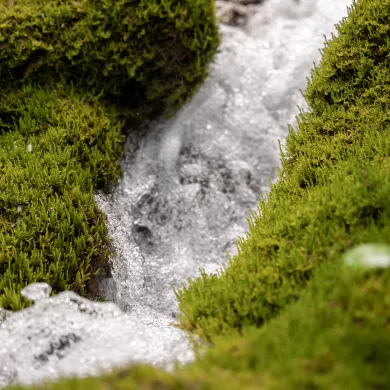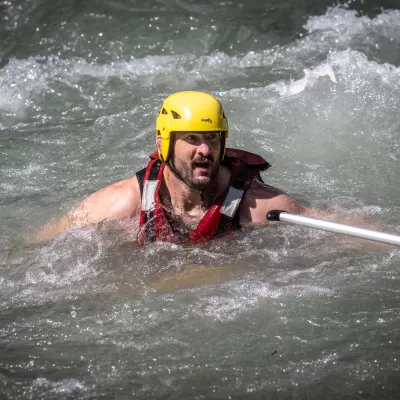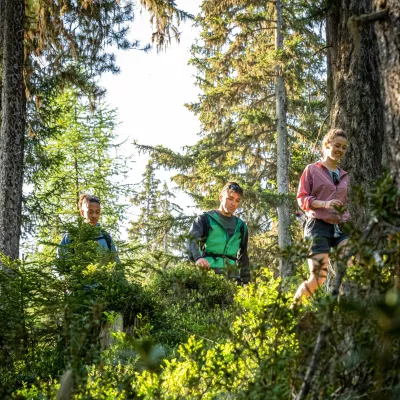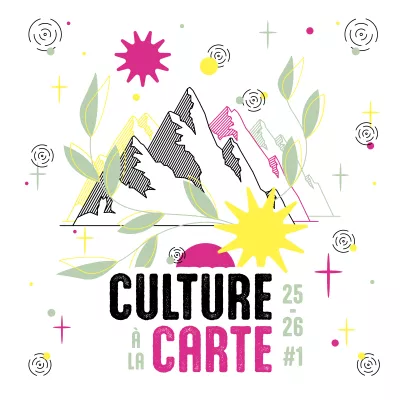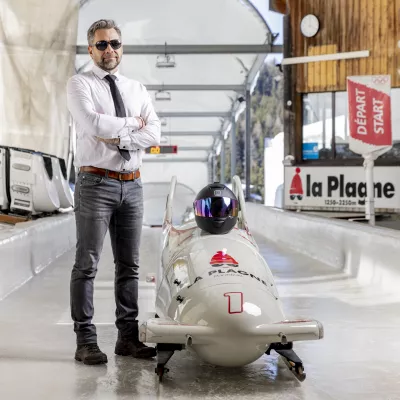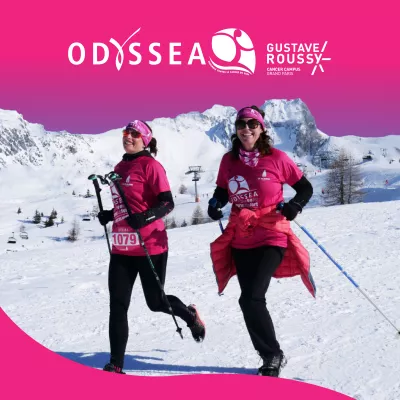In partnership with the SIGP, Veolia, the GRAINE & ASDER environmental and sustainable development education network, La Plagne has been proposing 6 workshops this summer to raise awareness of micropollutants in water for its clients and the local population.
They are experimental workshops: initially tested in La Plagne, the idea is then to offer them on a wider scale. I tested the workshops and would like to tell you about them...
The workshop is divided into 4 phases
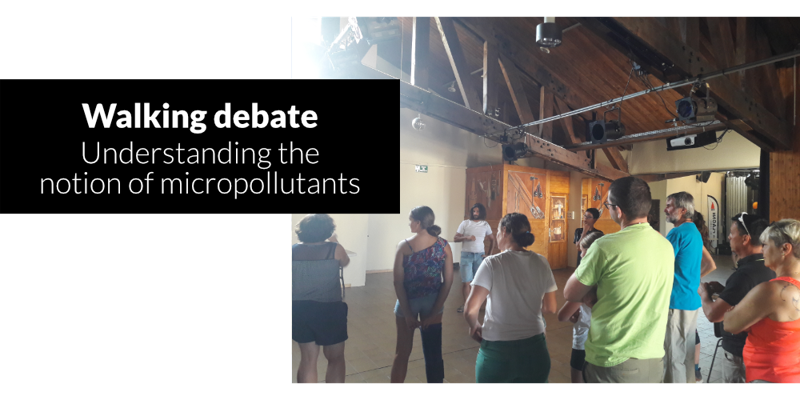
After an introduction to get to know each other (in a fun way, putting ourselves in first name alphabetical order so that everyone magically starts chatting to each other), we started the walking debate. But what exactly is a walking debate?
It's quite simple: to understand what a micropollutant is, the speaker put different statements to us. I went to the right side of the room if I agreed with them, or to the left if I disagreed. Then, we put forward our arguments (moving if someone’s arguments make us change our minds, of course). As the questions went on, I realised that the notion of micropollutants was becoming clearer...
WHAT DO WE LEARN FROM THIS?
The complexity of the topic. A micropollutant is always toxic, even in small doses... Its main characteristic is that it is toxic even in a small dose. It is no longer "the dose that makes the poison" as the saying goes. One micropollutant combined with another can create what is called a cocktail effect and become even more dangerous.
The multiple negative impacts: impacts on fertility, development, the organs … in both humans and animals and, more widely, on the environment.
It should be noted that microplastic is not a micropollutant, it is a different type of pollution (with just as great an impact).
Where is the largest quantity of micropollutants released? In industry, agriculture, nature, the home?... The winner is: the home! But don’t forget, of course, that the products that release them were manufactured somewhere else …
So now that we have said all this, can we do something about it? YES.
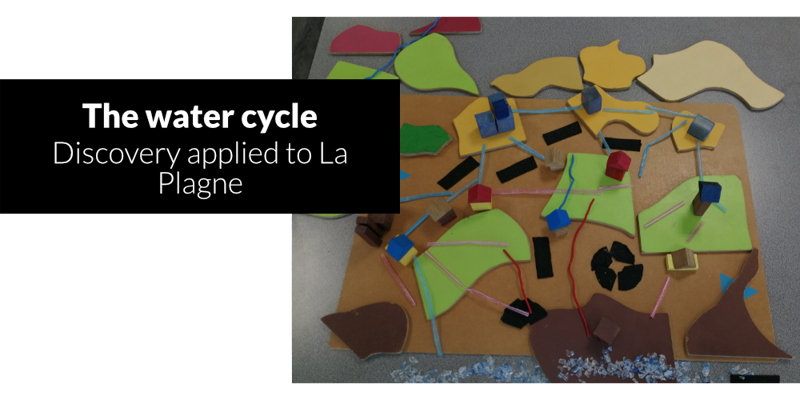
So then we went off in groups and were given labels: water treatment plant, catchment area, remineralisation plant*, distribution... It was up to us to classify these labels in the right order. After that, using the “ricochet box” educational tool, we enjoyed a creative moment reconstituting the water cycle in the form of a scale model.
WHAT DO WE LEARN FROM THIS?
In La Plagne, there are 2 specificities: a water remineralization plant and a flow equalization basin.
*The remineralization plant exists because the water collected in La Plagne has too low a concentration of minerals relative to the standards for drinking water (most of the water comes from snow melt). Isn’t that incredible? The water goes through a limestone filter to remineralise it and make it fit to drink. Click here to discover the water cycle in La Plagne (altitude sites).
The flow equalization basin. Do you come to La Plagne in the winter? Do you have a shower when you get back from skiing at the end of the afternoon? Does your neighbour also shower when they get back from their hike at the end of the day? And does their neighbour have theirs just before going out to dinner? You can see what we are getting at...a large part of the wastewater is released at the same time into the circuit leading to the water treatment plant...the flow equalization basin is there to prevent any overloading!
The water treatment plant processes the organic pollution contained in the wastewater efficiently, but it is not designed to treat micropollutants (or waste like cleansing wipes which must be put in the bin!). These therefore end up in the river... It would be better to avoid producing them, don’t you think?
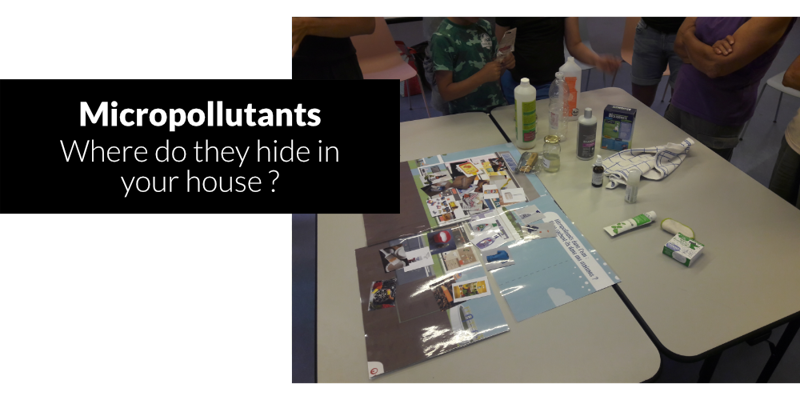
We head into the house for this third phase: where do micropollutants hide in the house? It is up to us to put them in the different rooms.
WHAT DO WE LEARN FROM THIS?
Micropollutants can be produced by all sorts of products: medicines, make-up products, shower gels, shampoos, detergents, biocides used in our gardens and for cleaning surfaces ...
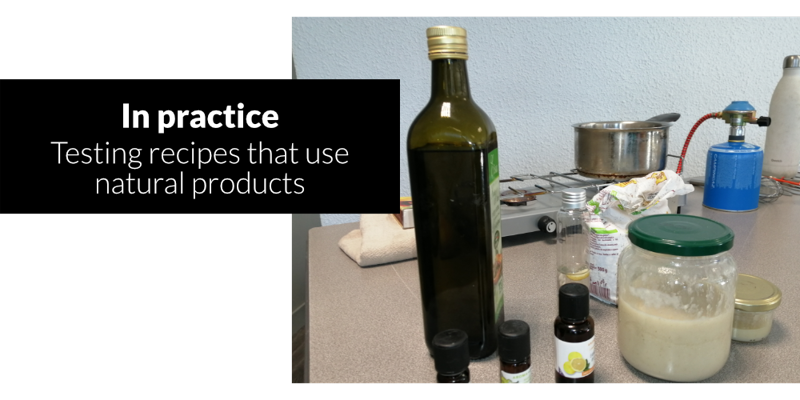
We finish on a practical note, testing recipes for making natural products.
A multi-use spray & an after-sun cream that are easy to make at home! Tested and approved. The oatmeal gel soaks in quickly and leaves the skin feeling well hydrated.
WHAT DO WE LEARN FROM THIS?
Our advice: do not try to change all your habits at once: that is a bit too much! One step at a time is the best way to get started.
You can find lots of recipes in the le guide de produits d’entretien écologiques published by the Instance Régionale d'Education et de Promotion de la Santé Auvergne Rhône-Alpes (IREPS ARA)
A few ideas for actions
We came out of the workshop reassured: yes, all this is worrying, but we can do something about it! We are motivated and have lots of ideas for possible ways to take action. Click here to display the memo –“Taking action against the micropollutants in the water" made by Veolia in partnership with the GRAINE network
Choice of products
Use the fewest types of products possible and only the quantity strictly needed.
Use environmentally approved products when possible (e.g. European Ecolabel, Ecocert, etc.) or ones with only a small number of ingredients.
Cars
Wash your car in a proper car wash (facilities with closed circuits). When you wash your car in your driveway, for example, the micropollutants that have accumulated on your car (e.g. metals, HAP, etc.) and the cleaning products go either into the ground or into the rainwater network… and then into the rivers.
Washing clothes
Good to know: white vinegar is an excellent fabric softener.
There are lots of recipes for homemade detergents.
Sun
Sunscreen can be dangerous for the receiving environment. Use organic products preferably and put your cream on after swimming rather than before, particularly in our mountain lakes!
Cleaning
Baking soda (or soda crystals) + 1l boiling water: the perfect mixture for unclogging pipes!
A tip for white vinegar-based mixtures: add orange or lemon peel to make it smell nicer.
You can find many recipes for cleaners (multi-purpose, glass, toilet, tiled surfaces, washing-up liquid, laundry) in le guide de produits d’entretien écologiques publié par l’Instance Régionale d'Education et de Promotion de la Santé Auvergne Rhône-Alpes (IREPS ARA)

